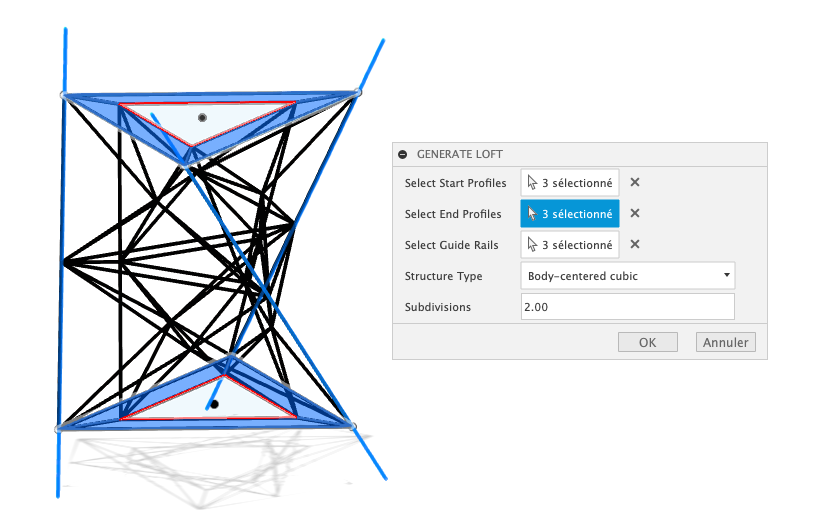Loft
This function allows the user to connect two similar sketches on two different planes together via a lattice structure

Usage
Start Profiles
The selection of profiles from which the loft will start. For better result, the start and end profiles should be of same number and similar shape as the algorithm will try to match them one for one
End Profiles
The selection of profiles up to which the loft will end. For better result, the start and end profile should be of same number and similar shape as the algorithm will try to match them one for one
Guide Rails
The guide rails link the points from the start geometry to the end geometry. The user should try to match points as best as possible to avoid interpolations errors.
| Correct Interpolation | Wrong Interpolation due to incorrect Guide-Rails |
|---|---|
 |  |
Structure Type
This refers to the unit cell structure that will be used to create the revolved geometry. For more information on lattice generation, read more here in the 'unit-cell' section
Subdivisions
Subdivisions number refers to the number of subdivisions throughout the total length of the body. This will define the cells height by doing:
cell height = length / layer number
The loft function works best for similar/identical sketches, it can be used for different geometries as it will always try to find the closest match but the results can be quite unpredictable.